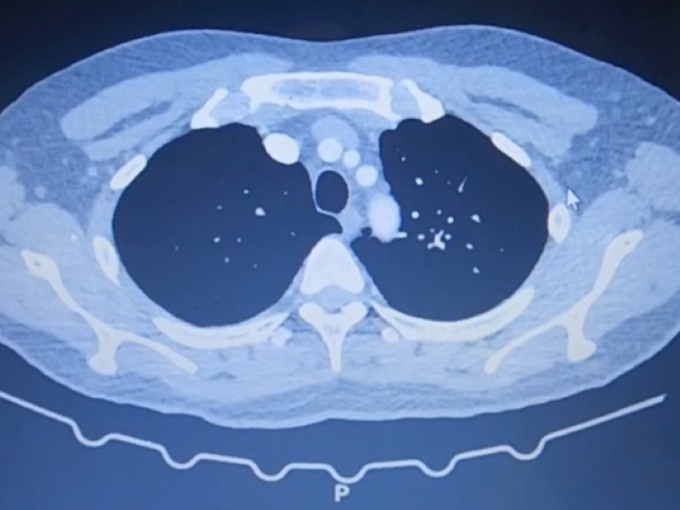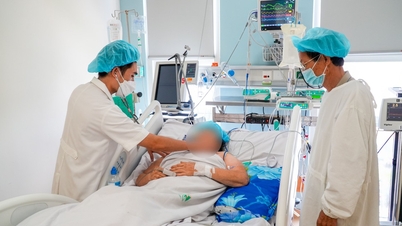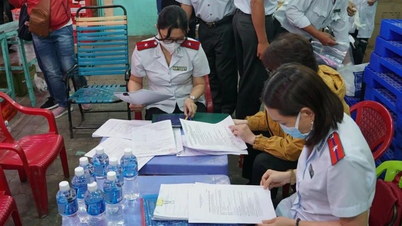Hanoi 40-year-old male patient, right calf pain, chest pain, acute shortness of breath during examination, doctor discovered diffuse thrombosis in pulmonary artery.
A week before going to the doctor, he exercised a lot, carried heavy objects, his right calf was hot and swollen, tense, and the pain increased when standing for a long time, affecting his daily activities. At Medlatec General Hospital, the patient was ordered an ultrasound of the veins of the right lower limb, which showed an image of venous thrombosis. In addition, there was edema and fluid accumulation in the soft tissue of the right calf.
After 15 minutes of ultrasound, the patient showed signs of chest pain and difficulty breathing. Emergency care was given, and pulmonary angiography was performed to find the "culprit". The CT scan revealed diffuse thrombosis in the pulmonary artery and anticoagulant drugs were administered to gradually dissolve the thrombosis. Currently, the patient's health is stable and he is receiving outpatient treatment.

Pulmonary angiography results revealed diffuse thrombosis, especially on the right side. Photo: Provided by the doctor
Pulmonary embolism is a condition that occurs when one or more arteries in the lungs become blocked or blocked. In most cases, pulmonary embolism is caused by a blood clot that travels to the lungs from another part of the body, most commonly the legs.
Pulmonary embolism can occur in otherwise healthy people, causing very serious complications and even sudden death. Signs and symptoms can vary greatly, depending on the extent of lung involvement, the size of the clot, and overall health, especially the presence of underlying lung or heart disease.
Common signs and symptoms of pulmonary embolism include: shortness of breath, chest pain, cough, wheezing, leg swelling, bluish skin or mucous membranes, excessive sweating, rapid or irregular heartbeat, weak pulse, dizziness or fainting,...
"Depending on the characteristics of the blood clot causing the blockage, it can be large or small, with one or more blood clots, and the pulmonary embolism can progress to a severe or mild state, which determines the severity of the disease," said Master, Doctor Pham Duy Hung, Deputy Head of Internal Medicine Department, on June 14.
If pulmonary embolism is detected early and treated promptly, the prognosis is considered good, and the patient can fully recover. If the patient has a serious underlying medical condition before the pulmonary embolism, the prognosis will be worse, treatment will be more difficult, and life-threatening.
Le Nga
Source link



![[Photo] Prime Minister Pham Minh Chinh chairs conference on anti-smuggling, trade fraud, and counterfeit goods](https://vphoto.vietnam.vn/thumb/1200x675/vietnam/resource/IMAGE/2025/5/14/6cd67667e99e4248b7d4f587fd21e37c)
































































































Comment (0)